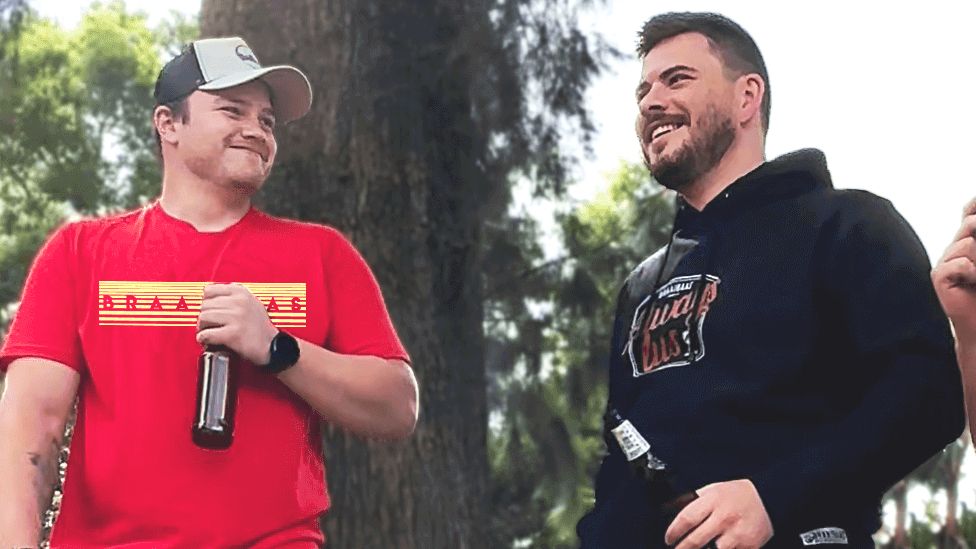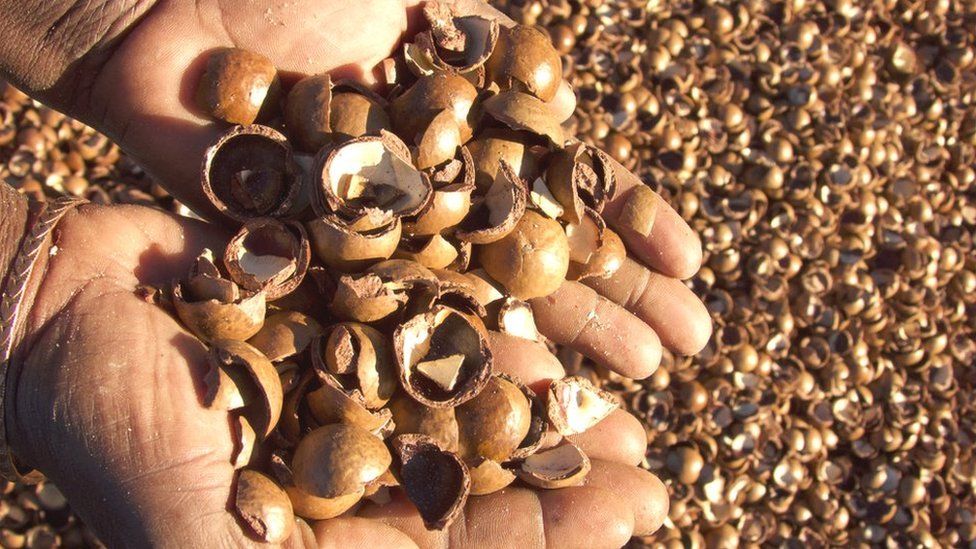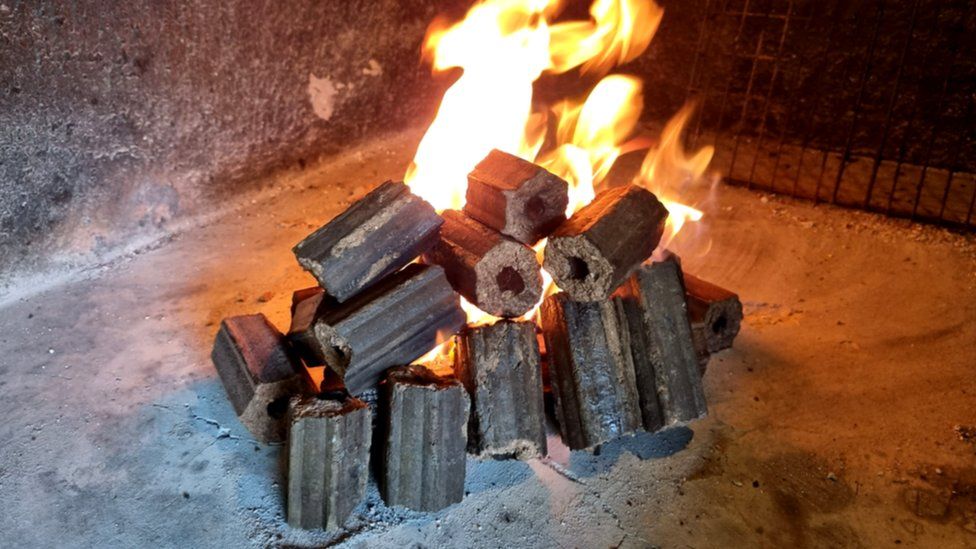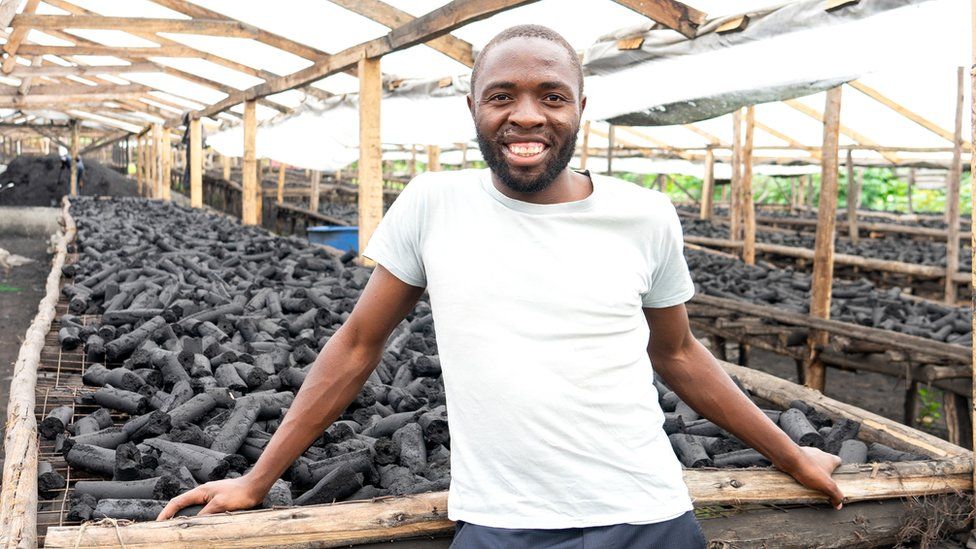-
Published

For Nathan Visser a friendly braai, the word in South Africa for barbecue, is more than a meal – it’s a social tonic.
“We all got our differences and yet somehow braais seem to mitigate that, where we don’t care, we all just get along,” he says.
He runs a company called BraaiBaas, or barbecue boss in Afrikaans. Its products include an apron with the slogan “stay calm, we’re going to braai now” and a hoodie that has a dedicated pocket for a bottle of beer and a handy opener attached.
Like many people Mr Visser prefers firewood to cook his meat, rather than charcoal. And you can forget gas, which is often frowned upon in South African barbecue culture.
While, in general, he values being mindful of the environment, that does not extend to changing his braai habits. Mr Visser argues that his braai does not burn long enough to do much environmental damage.
He doesn’t want to switch away from firewood to briquettes that claim to be more sustainable. “I don’t want my meat to taste terrible,” he jokes.

Michael Duncan, the founder of Shisa Eco-briquettes, is keen to prove him wrong.
His company is exploiting an abundant source of combustible material in South Africa – macadamia nut shells. The country is the world’s biggest producer of macadamia nuts, so there are plenty of shells going spare.
Since 2021, Mr Duncan’s firm has been taking some of them, compressing them and turning them into briquettes.
He says Shisa Eco-briquettes are an environmentally-friendly alternative to charcoal.
Often charcoal manufacturing in Africa is small-scale, emits more carbon dioxide (CO2) than it needs to, and contributes to deforestation.
Mr Duncan says that his eco-briquettes can protect forests by replacing charcoal and wood with a product completely derived from a waste biomass product.
And, according to Mr Duncan, briquettes made from macadamia shells can add to the braai experience.
“You have a macadamia nut shell burning, that lets out a wonderful aroma which actually also goes on to the food you’re actually cooking, so it gives you a different taste.”
Mr Duncan plans to expand, particularly into export markets, which he says tend to be less cost-sensitive and particularly value eco-friendly products.

Beyond the braai, more environmentally friendly cooking methods could tackle a much bigger problem.
According to the World Health Organization (WHO), globally around 2.4 billion people use inefficient stoves or polluting cooking methods, including kerosene and coal.
Breathing the smoke produced from cooking with polluting fuels can lead to heart diseases, stroke, cancers, chronic lung diseases and pneumonia, the WHO report says.
Ziwa Hillington is the managing director of Green Bio Energy in Uganda, which makes more efficient cooking stoves and briquettes from waste like charcoal dust, cassava and maize crops.
He says those briquettes produce no smoke or soot when burnt, so are a much healthier option. They also help mitigate deforestation. In addition, making the briquettes provides employment.
Perhaps the biggest advantage is cost – Mr Hilligton says they can be between 20% and 40% cheaper than charcoal or other cooking fuels.

Sylvia Herzog is the director of the Charcoal Project, a non-profit that works to find solutions to the unsustainable production and use of charcoal and other fuels, particularly in sub-Sahara Africa.
The charcoal industry is projected to grow at around 3% a year over the next 10-15 years. “Both increase in population and in urbanisation has really driven demand in the less developed world for charcoal,” explains Ms Herzog.
She says briquettes made from waste from agriculture and other industries offer a cleaner alternative, but only account for a small part of the market.
“I think the reality is that charcoal isn’t going away anytime soon,” she says and thinks that briquettes might be a good stepping stone to cleaner forms of energy.


Rachael Kupka, the executive director of the Global Alliance on Health and Pollution, says it is hard to tell whether eco-friendly briquettes would have a significant impact on local air pollution or human health.
“We do know that indoor cooking is responsible for a large portion of the burden of disease from air pollution – and that as a general sector does need to be addressed if we have any hope of reducing the human health impacts of indoor air pollution.”
Back in Johannesburg, Nathan Visser stresses the positive, and difficult to measure, benefits of cooking on a fire.
“I believe braai is like a hidden language that we all speak, yet we don’t understand it yet. We all can come around a fire with no issue, no barriers, and just get along.”
Related Topics
